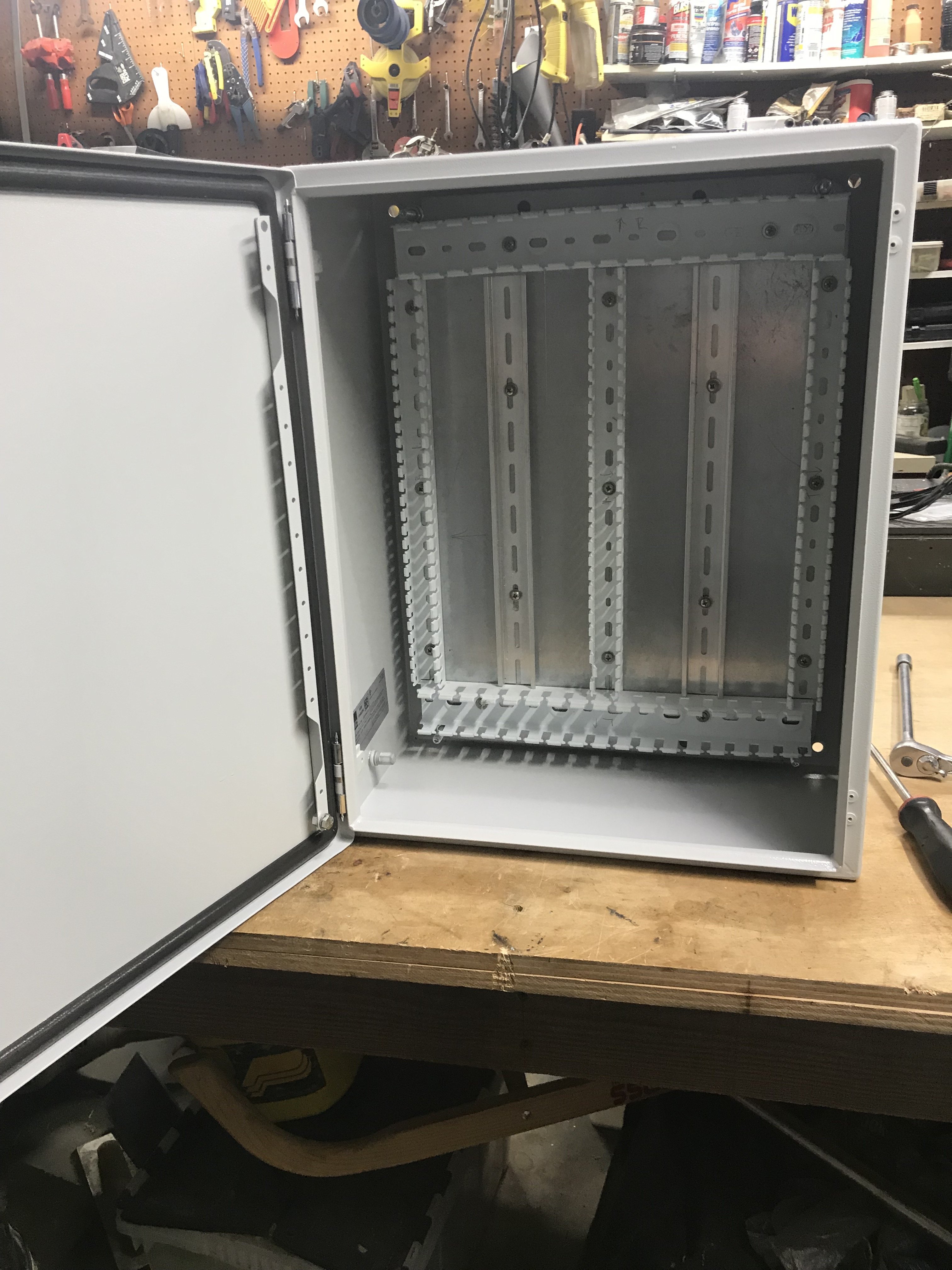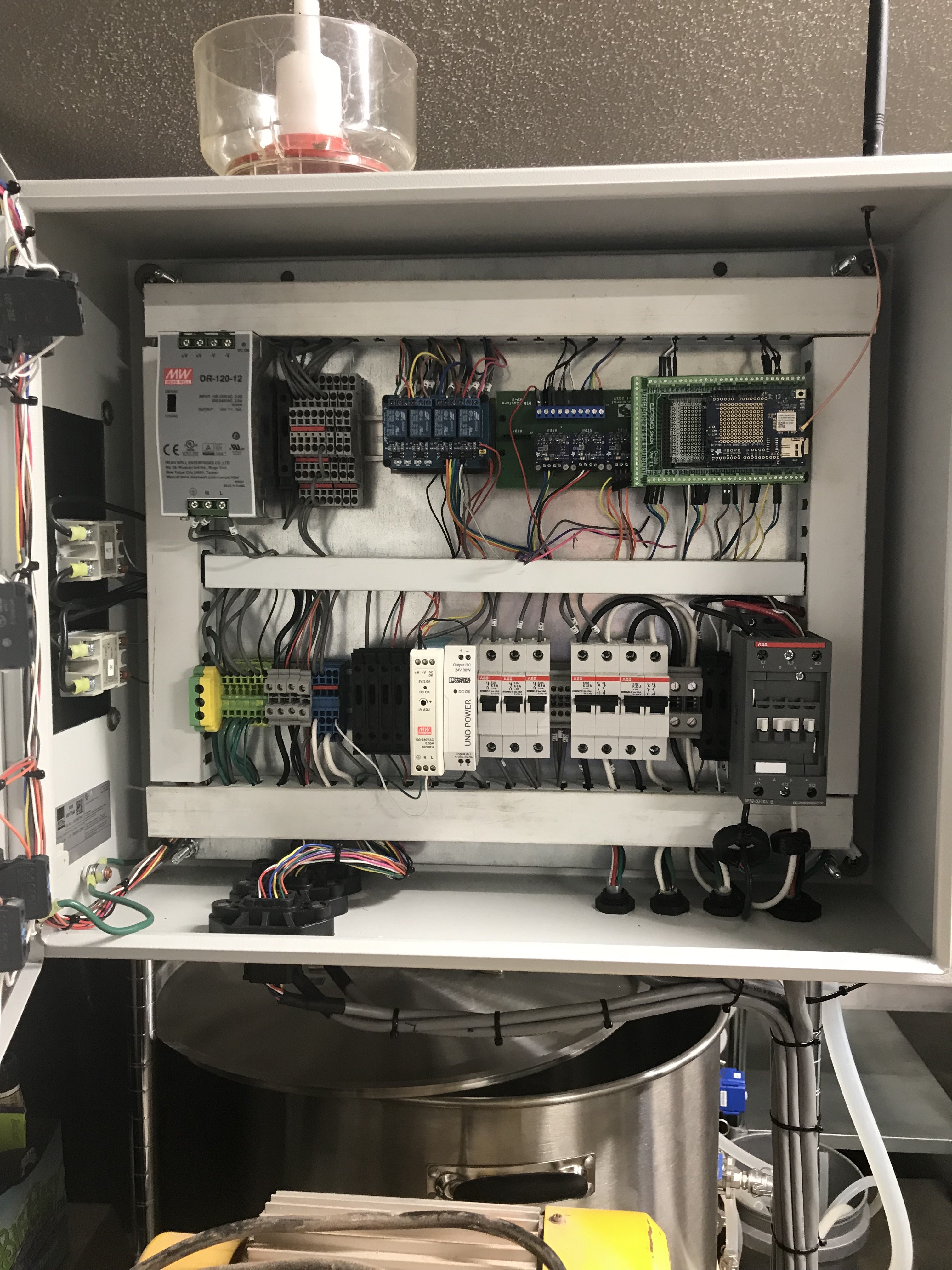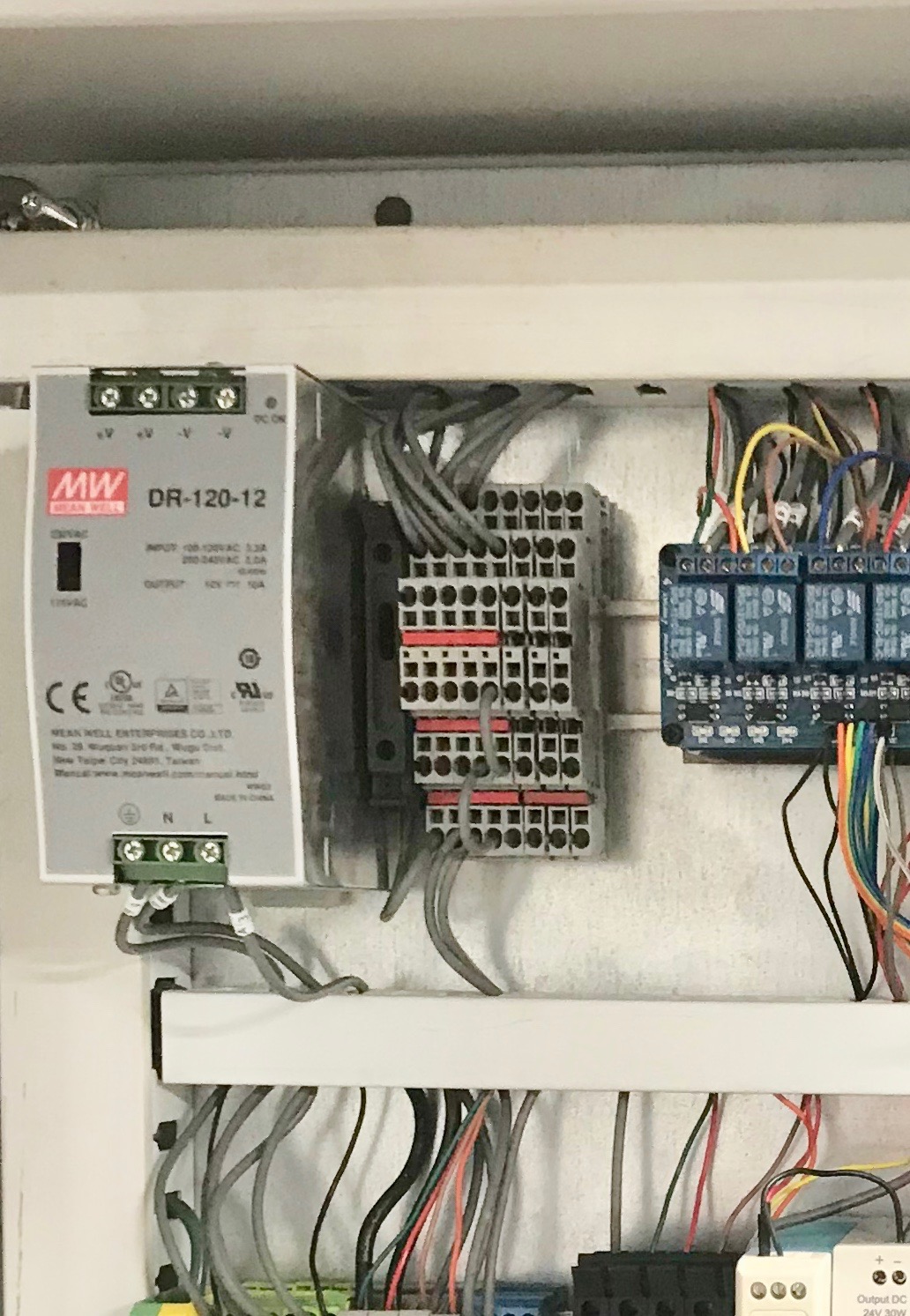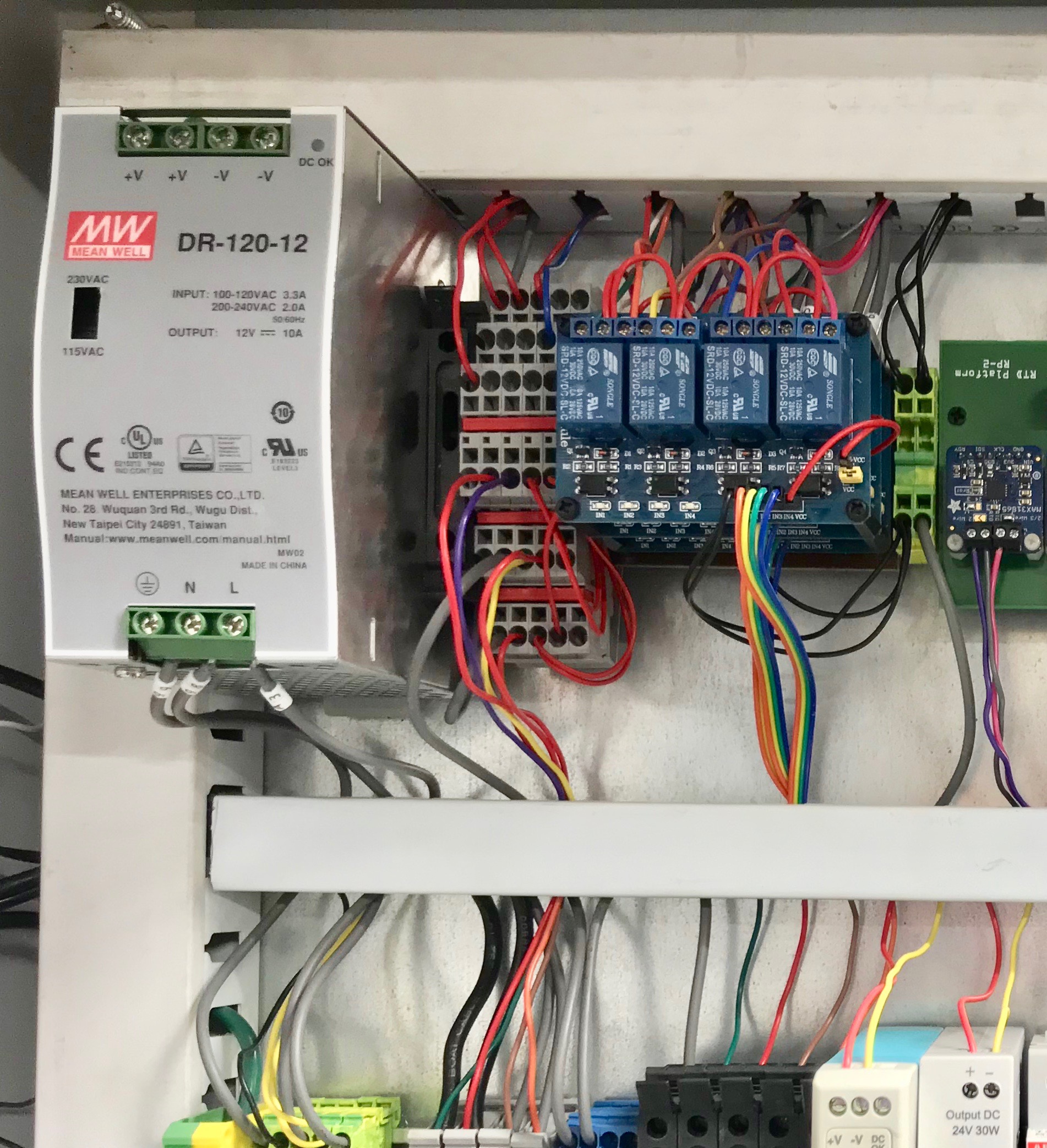augiedoggy
Well-Known Member
Im thinking maybe it normally has a hose connected for filling fermenters or possible its a drain valve for flushing the lines? I have both..Why would a valve be piped to the floor?

Im thinking maybe it normally has a hose connected for filling fermenters or possible its a drain valve for flushing the lines? I have both..Why would a valve be piped to the floor?

(flow rate is important as I'm running a 20g uninsulated SS MLT)...





What size is your control box?Basic power is wired up, and I'm locked in to the new workspace on BruControl!
View attachment 569036 View attachment 569037
What size is your control box?


Nice!The Brew Stand Controller is 24" x 20" and the Ferm Controller is 16" x 20"
View attachment 569323 View attachment 569324
Please do not take up a dangerous vocation or hobby








I am in the process of redoing my 3 bbl panel right now as well.. I did get everything working correctly as far as spikes, but I had accumulated some better UL listed allen bradley contactors and crydom ssrs which I think my inspector would appreciate better than just the ce certification my old contactors had. The new ones switch with 24v dc and I decided to do some cleanup and rearranging keeping all the DC stuff at the top of my panel.Update: I've been dealing with a weird temp sensor issue in my system. Thanks to the data logging and graphing capabilities of BruControl, and the patient but relentless tech support from @BrunDog over in the BruControl thread, it looks like it's close to being solved.
In a nutshell, a small ice cube relay can allow an inductive load like a pump or a fan to put a measurable EMI spike onto the 5v power circuit when the relay is shut off and the contacts open. Installing a metal-oxide varistor (MOV) in parallel with the power feed to the pump or fan seems to clamp the EMI spike.
Installing the MOVs in my brewstand controller prompted me to take advantage of an opportunity to clean up a bunch of kludgy wiring that sprouted up while troubleshooting this EMI problem. I wound up taking the entire top rail apart and redoing everything.
Originally, I connected the relay boards to the Mega with Dupont jumpers. The runs were too long for one jumper, so I connected them back to back. I never did like it, because I was always fussing over inadvertently disconnecting one, and I also didn't like the little bit of exposed metal on the female connectors. All gone now. A lead from the relay board header pin now goes into the tray and is connected to a piece of 18AWG via a heat shrink butt connector. I managed to scrounge up enough 18AWG that I could keep the color coding consistent.
I also redid my power supply wiring. There had been a number of changes from the original design, including the addition of 5v and 24v power supplies. I wound up with 2-3 leads tied down to the DC+ terminal on both the new supplies. Originally, I used triple-stack Phoenix blocks as a 12v distribution bus. With the rewire, I now have all three DC voltages available on the same Phoenix blocks. 12v is on the lower tier, then 24v in the middle and 5v on top. See the detail pics for the particulars. I also eliminated individual 12v feeds to the relay "Common" terminals, and just daisy-chained them.
Finally, in order to recover rail space for the op-amp board, I rotated the Mega assembly. Before and after pics of the top rail are attached. The whole box looks cleaner now.
View attachment 581501 View attachment 581502 View attachment 581503 View attachment 581504 View attachment 581505


I could be wrong but it ws my understanding that the additional components extended the life of the varistor (MOV) in that snubber assembly. I read in one of the arduino help forums that the varistor alone could burn up violently when they fail and that kind of scared me from using the ones I got.That last link is a RC filter (snubber) + MOV in one board.
As far as MOVs wearing out, I wouldn’t worry about it. If you pick one with a large enough energy rating, it should have a long practical life.
Do they not have ebay where your from or do you just not care for it? I have well over 2000 purchases with only a few negative experiences and the prices are almost always much better than amazon for the same or comparable products so I prefer it myself over amazon which often favors the sellers with confusing listing practices and limited sorting.Be nice to find a source for that part that isn't from the Bay. Looks like @augiedoggy has been waiting for a while. Maybe Mouser or Digikey? Here is an Amazon link, but it looks like a lead time of about a month, and there's a Bezos fee associated.



Enter your email address to join: